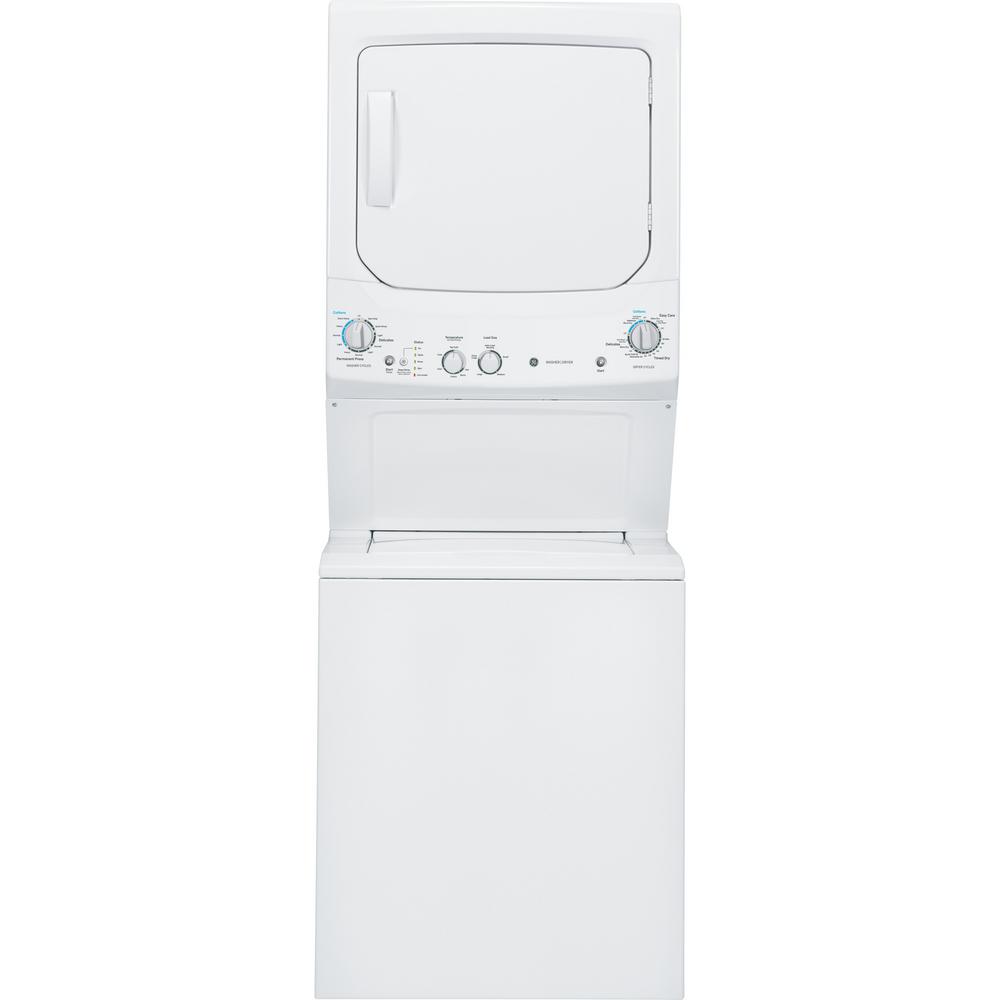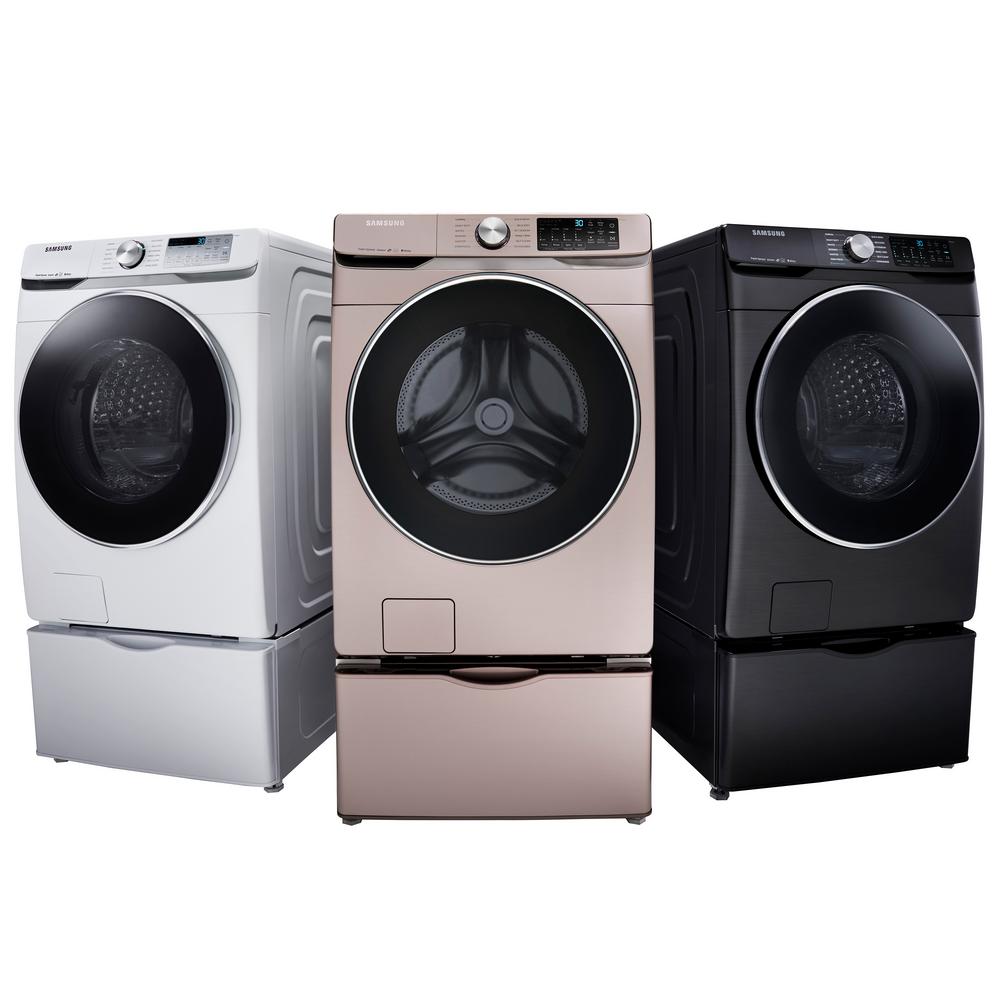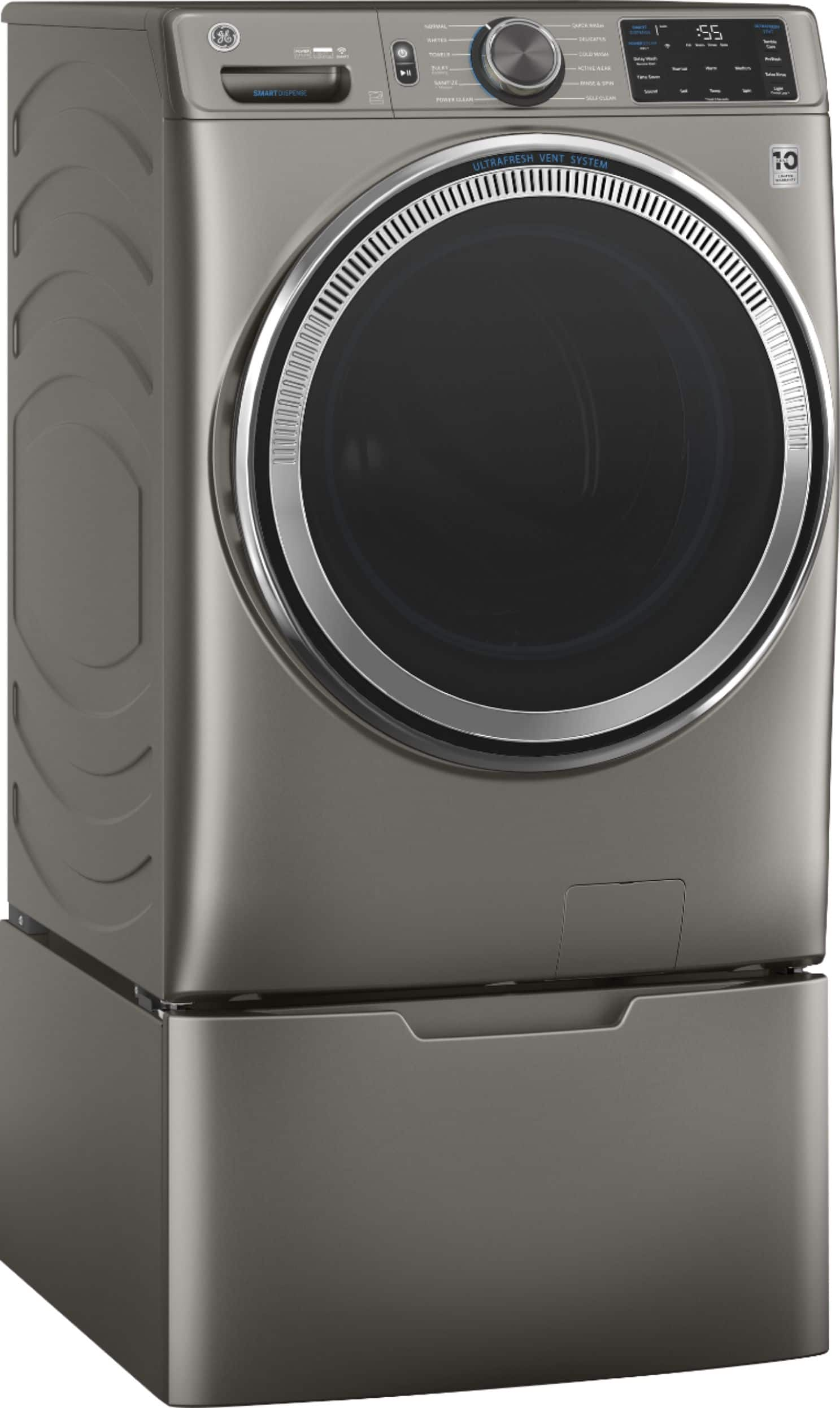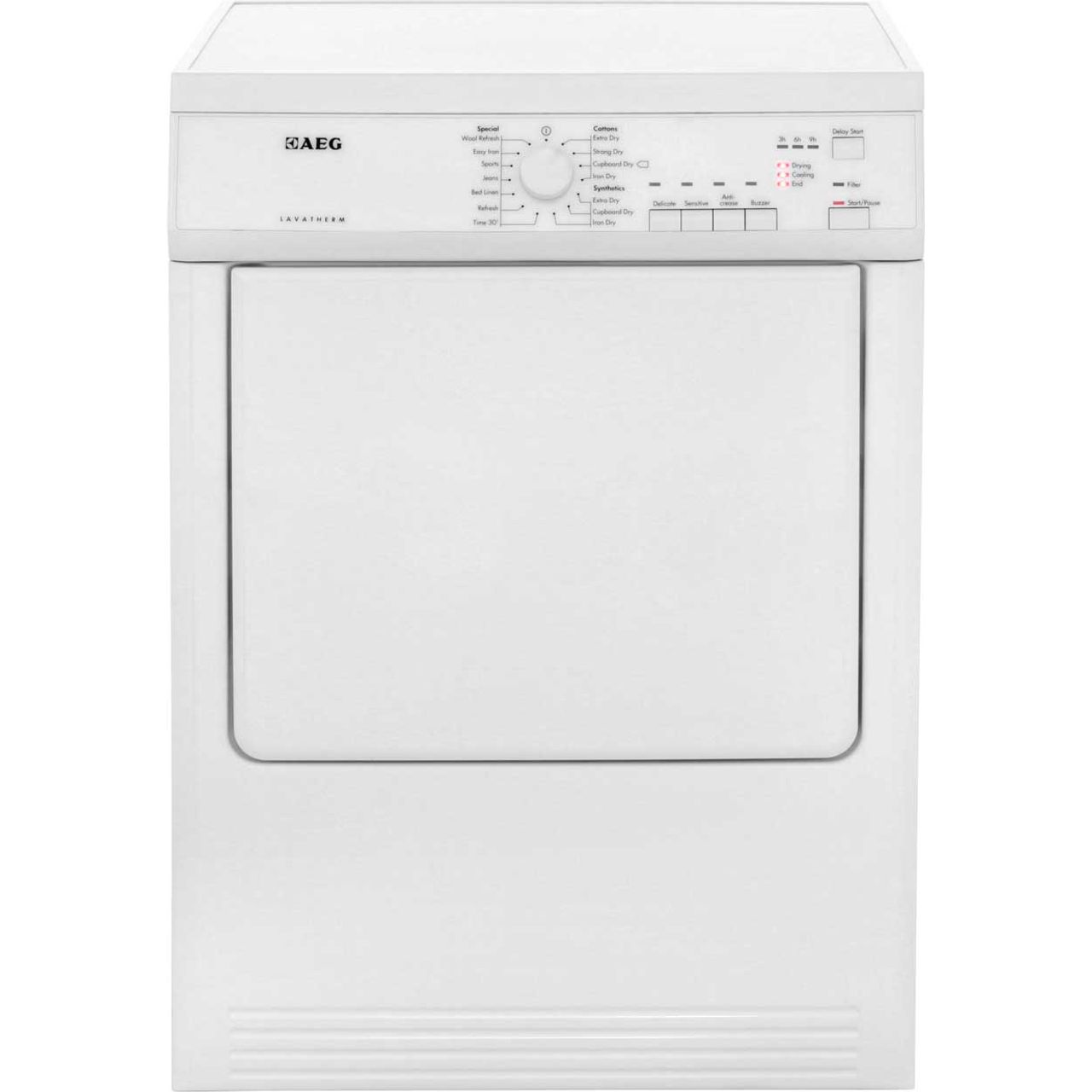LG Electronics 7.4 cu. ft. Black Steel Ultra Large Capacity Gas Dryer with Sensor Dry TurboSteam
7.4 cu. ft. pedestal compatible or stackable LG Gas Dryer. LG washer and dryer- pair w/ WM4000HBA washer. TurboSteam technology reduces wrinkles and odor.
Meet the intelligent dryer that helps you save time and enhances fabric care, all at the same time. TurboSteam technology reduces wrinkles and odors in up to 5 garments to refresh clothes in between washes. Built-in intelligence automatically selects the right drying motions, temperatures and more, and even talks to your washer to select a compatible cycle-making it the ultimate laundry hack. You’ll even score high on the durability and style scale, thanks to the scratch-resistant tempered glass door and rose gold accents.
- Free up your day-fit more clothes in every load with 7.4 cu. ft. of space, running fewer loads saves energy and money on your utility bill
- Steam refresh clothes in between washes, refresh instantly with TurboSteam that generates steam penetrating deep into fabrics
- Built-in intelligence takes out the guesswork – AI technology selects optimal dry motions and settings, washer can auto-select a compatible drying cycle
- ThinQ App controls laundry remotely and proactive customer care sends maintenance tips and alerts
- LG front load washers and dryers are the first to use tempered glass doors for a sleek, stylish look that resists shock and scratches, the premium feel is further enhanced by matching door trim and control knob accents
- FlowSense duct clogging indicator will tell you when its time to clean the ducts out, clean ducts mean a great drying every time
- High efficiency sensor drying and low-heat settings save energy and money by using about 20% less energy than conventional models without sacrificing features or performance
- Handles surprisingly big loads with a compact, closet depth design that offers plenty of installation options
- Aluminized alloy steel drum has toughness and an attractive finish that will last for years
- Designed for quiet operation, run the dryer without interrupting naptime or your favorite show
- Dryer door can easily be reversed from a right swing to a left swing in minutes to give you more installation options
- Periodically tumbles dry for up to 3 hours after the cycle is done to help keep wrinkles at bay
- With smart pairing, the washer can even tell the dryer to select a compatible drying cycle, making it the ultimate laundry hack
- Installation is not available in all locations, see store for details
Additional information
| Depth With Door Open 90 Degrees (In) | 51.37 |
|---|---|
| Door Opening Height (In.) | 16.06 |
| Door Opening Width (In.) | 16.06 |
| Product Depth x Height x Width (in.) | 30.13 x 39 x 27 |
| Certifications and Listings | CSA Listed,Energy Star |
| Manufacturer Warranty | 1 Year Parts and Labor, 10 Years Drum |






by Alan
I’ve had this dryer for two weeks and it is awesome. It’s fast, quiet, and easy to use. I’d certainly recommend it to anyone looking!
by Mike
Have been using it for a few months now and it works great. Easy to use, does a great job drying clothes and looks great.
by Wendy
Replaced my 16 year old Front Load LG and couldn’t be happier. This is so quiet, spins my clothes almost dry, connects with my dryer and cuts my dry time down greatly.
by Stone
I purchased this product about a month ago. I have two little babies and this product made my life so much easier! I am so happy with the purchase and would recommend this for anyone.
by Burn
I purchased this dryer a Month ago, enjoy the ease of operation and features.
by Pika
Great Dryer – met expectations.